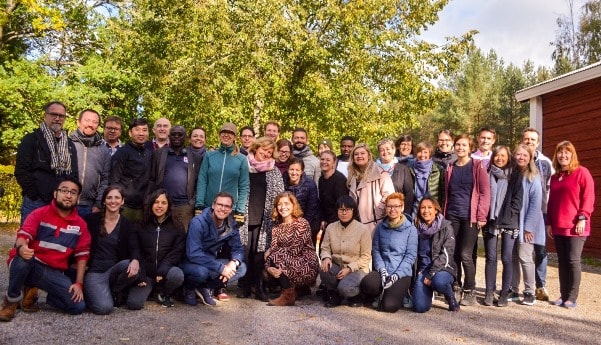In the early days of a disaster, Red Cross communications aid workers are under immense pressure to respond.
Communications aid workers are responsible for managing media requests, conducting interviews, finding spokespeople, providing information to local communities, and gathering and sharing information back to the Red Cross, governments, and stakeholders.
These early days are also a key time for communications aid workers to reach the media to harness the public’s attention and increase donations, which have a big impact on the disaster assistance that the Red Cross can provide.
That’s why the International Federation of Red Cross and Red Crescent Societies (IFRC) held its first-ever international emergency communications training in Finland in September.
The training gathered communications professionals from Red Cross national societies around the globe, spanning 22 different countries.

Nicole Robicheau, a Toronto-based communications manager and aid worker with the Canadian Red Cross, attended the training as a facilitator and peer coach.
“It was valuable to hear people’s experiences from multiple backgrounds,” said Nicole. “We had such a diverse group of participants – some people with no Red Cross experience, some people with aid work experience, and some people from other Red Cross National Societies who usually receive international aid workers when they arrive in country.”
The training took place over five days, with three days of classroom training, and a two-day emergency simulation. The simulation immersed participants in a fictitious response to an earthquake, giving participants a chance to practice their communications skills in a safe learning environment.
“A simulation is a great way to put you in the mindset of what it would be like to be on a mission,” said Nicole. “It creates a bit of stress, and it gives you the opportunity to see how you’d react. That’s valuable, because if you haven’t been in an emergency response context, you might not know how you’d respond.”
“The training was really valuable because I got to spend time with people who have experience in the same capacity that I’ve been working in,” said Angela. “It’s nice to get one-on-one time with people who do the same job as you - they understand your job and can help troubleshoot things before they happen.”
Participants also had to respond to aftershocks, which are smaller earthquakes that follow the largest shock of an earthquake. In a humanitarian simulation exercise, unexpected challenges like these are injected as the exercise unfolds to add stress and realism to the experience.
Angela offered advice to future participants to help make their simulations feel more real and get the most out of their training experience:
“It’s about being in the moment,” she said. “It’s easy to say it’s just a test. What’s really important is to be in the mindset of pretending it’s real. Being open to the simulation and what you feel will help you have the best experience. Living in the moment as if you were really there will help with your learning.”
Liam Brown is a communications advisor to the Government of Ontario based in Toronto. Liam is an active advocate for global health and international development and has worked with a variety of international organizations on communications campaigns, including Grand Challenges Canada, the Bill & Melinda Gates Foundation, USAID, and the Every Woman Every Child movement.
The Canadian Red Cross is currently recruiting communications aid workers to work nationally or internationally in emergencies and disasters. Visit the job postings for generalist or videographer/audio visual specialties to learn more.

